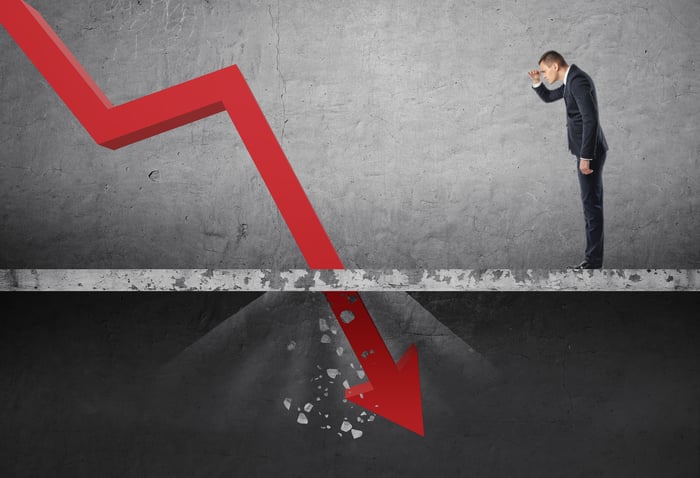The "retail apocalypse" strikes again as a Chapter 11 bankruptcy of Forever 21 adds to the long line of retailers that have fallen prey to changing shopping patterns. While the media is probably making too much of the story and its long-term impact, there's no denying that retail is working through a transition period.
That's been bad news for mall real estate investment trusts (REITs) like Simon Property Group (SPG 1.40%), which is trading near a three-year low, partly on the Forever 21 news. If you can look past the dour attitudes and examine this mall owner's fundamentals, however, you might change your mind about the stock.
Where's the mall?
All malls are not created equal, with a range of factors (including quality and location) separating the best from the worst malls. On the whole, Simon's 235 properties are pretty nice malls. That's evidenced by its sales per square foot, where Simon's $660 average is among the highest in its enclosed mall peer group. So is the REIT's average rent, which comes in at roughly $54 per square foot.

Image source: Getty Images.
The strength of those numbers isn't actually surprising. Simon sits in second place among its peers for measurements like median household income and population within 15 miles of its malls. It has desirable malls that customers want to shop at and in which retailers want to be located. Location is important in real estate, but it's extra important when it comes to malls right now. That's because investors in the retail sector are shifting gears and refocusing around the best physical locations. Simon has those locations.
That shines through when you look at Simon's occupancy rate, which, at the end of the second quarter, was at roughly 94.4%. That's down a little year over year, but rent per square foot and sales per square foot were both slightly higher. All told, Simon's malls are holding up very well despite the so-called apocalypse that's hitting the retail sector.
Built to last
Simon's collection of solid malls is a pretty good reason to consider buying the REIT and its 5.3% dividend yield. But dividend investors need to look at a potential investment's financial foundation as well before making a decision. And, once again, Simon comes out looking pretty good.
Comparing Simon to Taubman Centers (TCO) and Macerich (MAC 2.62%), its closest peers based on portfolio quality, is illuminating. Simon's financial debt-to-equity ratio of 0.50 is half that of Macerich's 1.04 and less than a third of Taubman's 1.68. Meanwhile, Simon covers its interest expenses by a little more than four times, while these peers only cover theirs by less than two times. Simon's balance sheet is in much better condition.
SPG Times Interest Earned (TTM) data by YCharts.
That strong balance sheet helps explain why the REIT was recently able to sell $3.5 billion in debt at attractive rates to extend its maturities, reduce interest costs, and free up its revolving credit facility (more on this in a second). Notably, it set a record for the amount of 30-year debt sold by a real estate company, showing that bond investors see good things ahead for Simon.
The next big issue to think about is growth, which is hard to find in the mall sector. But Simon is actually building four new outlet malls in foreign markets. These will open between late in 2019 and 2021. As they open, they will start adding to the company's top and bottom lines. The most notable benefit from the bond sale was that it allowed Simon to pay down its credit facility, which gives it ample liquidity to fund the construction of these projects. It also gives Simon the ability to continue redeveloping its current malls, to shift with the changing retail landscape. That includes revamping vacant anchor tenant locations and bringing in new types of tenants. Solid occupancy and rents show that Simon is doing a good job on this front.
Act now, while it's cheap
Simon is trading near three-year lows. The REIT's yield is the highest it has been since the deep 2007-2009 recession. Its well-located properties continue to perform well. Financially it is among the strongest names in the enclosed mall peer group. And it has growth plans that should keep the top and bottom lines increasing for the next several years. Wall Street is right to worry about the changing shape of the retail sector, but Simon appears to be handling the headwind in relative stride. And that suggests investors should strongly consider adding it to their income portfolios while it is on sale.






